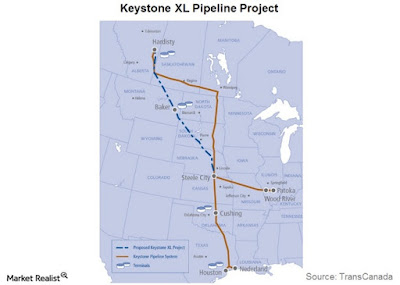The U.S. State Department approval of the Keystone XL Pipeline is great news for South Dakota. This modern piece of infrastructure will bring jobs to the state and boost its economy.
The Keystone XL debate is not new. For eight long years, President Barack Obama purposely kept Keystone in limbo to appease environmental activists.
President Trump wasted little time reversing course, recently issuing a federal permit for the project to continue. When completed, the Keystone XL Pipeline will carry crude oil from western Canada to refineries on America’s gulf coast. The new 875-mile segment running across South Dakota from Montana and ending in Steele City, Nebraska, will fully connect the northern section to the already completed southern section of the project.
Keystone XL will bring huge economic benefits, welcome news to South Dakotans and the place I call home. This project will be one of the most economically viable projects to impact rural communities in recent history. The pipeline will create thousands of well-paying jobs, including approximately 3,500 construction jobs in the states through which the pipeline will travel.
We all agree this influx in construction staff is temporary, but so is tearing out an old bridge on Interstate 90 and constructing a new one. That’s the nature of infrastructure-related construction projects. Every major infrastructure project from bridges to pipelines will create construction work and benefit South Dakotans for years to come.
Keystone will also benefit rural economies across the state. Due to budget shortfalls, rural communities are continually searching for funds just to maintain basic public services. Keystone XL will support urgently needed tax dollars for updating rural fire department equipment, school facilities and deteriorating county roads and bridges.
What’s more, the Keystone XL project will support opportunities for a vast amount of service-related companies in western and central South Dakota. As services are needed during construction of Keystone XL, we’ll see an increase in business at local mechanic shops, tire shops, convenience stores, and restaurants along the route.
Once construction is complete, South Dakota alone will see an additional $17.9 million annually in new property tax revenue and an increase in sales and excise tax revenue of $46.5 million over two years.
TransCanada’s willingness to communicate with stakeholders along the route, including indigenous communities has been nothing short of impressive. When this project finally comes to fruition, we will work together through effective engagement to share information on the project, gather input from leadership in indigenous communities, and ensure project safety for all South Dakotans.
South Dakota has long been sending a strong message to Washington: We want Keystone XL. Both the South Dakota House and Senate passed a resolution urging the State Department to approve the Keystone permit “in order to strengthen the United States’ energy security, provide for critical pipeline infrastructure to achieve North American energy independence, and to stimulate the economy and create jobs.”
With the State Department’s approval granted, national energy policy is once again making both our national and local economies a priority.
Adam Martin is a former councilman for the city of Sturgis with 23 years combined experience in business development and local, state and federal government relations. He is the executive director of South Dakota Oil and Gas Association, serving members throughout SD, ND, and CO.


